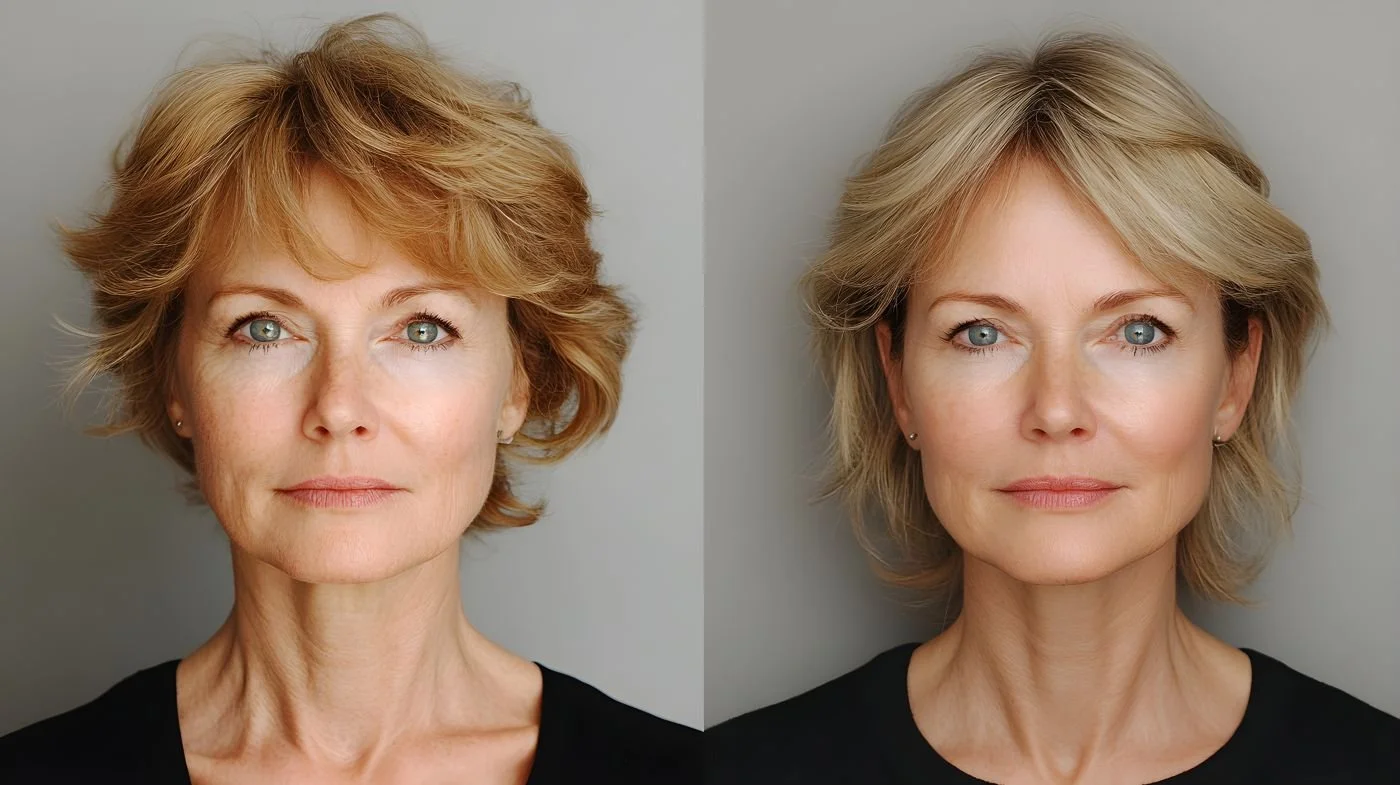Ozempic Face: What It Is, How To Fix It & Costs
Ozempic has made headlines for its effectiveness in weight loss and blood sugar control. But as its popularity grows, a new side effect has entered the aesthetic conversation: Ozempic face.
Let’s talk about what that means, why it happens, and—most importantly—how to fix it without looking “done.”
What Is “Ozempic Face”?
“Ozempic face” isn’t a formal medical diagnosis. It’s a term coined to describe the facial changes some people experience after rapid weight loss from using Ozempic (semaglutide), a GLP-1 receptor agonist used to treat type 2 diabetes and obesity.
As the pounds drop, facial fat often disappears along with it. For many, that translates to:
Deflated or hollow cheeks
Deepened nasolabial folds (laugh lines)
Jowling or loose skin around the jawline
More visible fine lines and wrinkles
A tired, aged appearance—even when you feel better than ever
These changes aren’t dangerous. But for people who were hoping for a refreshed post-weight-loss glow, the unexpected facial volume loss can feel discouraging.
Why Does It Happen?
Weight loss affects more than just the number on the scale—it changes your entire body composition. While most people expect to lose fat from their waist or thighs, they’re often surprised when it also comes from the face. And because facial skin is so delicate, even a small drop in volume can have a big visual impact.
Think of fat as scaffolding for your face. It gives structure, support, and youthful roundness. When that fat disappears quickly, the skin doesn’t always have time to bounce back—especially if collagen and elastin levels are already declining with age.
Who’s Most at Risk?
Adults over 35 (collagen production naturally declines around this age)
People who lose weight rapidly (more than 1-2 pounds per week)
Individuals with naturally lean or angular facial structures
Those with pre-existing skin laxity
Not everyone who takes Ozempic will experience facial changes. But if you already had slight sagging, volume loss, or a thinner face to begin with, Ozempic can fast-track those visible signs.
How To Fix Ozempic Face
Luckily, there are safe, effective aesthetic treatments that can help restore volume, improve skin tightness, and bring balance back to your face—without going under the knife.
Let’s break down your options further:
1. Dermal Fillers
Best for: Hollow cheeks, under-eye shadows, deep lines
Dermal fillers like Restylane® or Juvéderm® work by restoring lost volume in targeted areas of the face. They’re made with hyaluronic acid (a substance naturally found in the skin), which plumps and hydrates tissue.
Popular areas for Ozempic face:
Cheeks (to lift and contour)
Nasolabial folds
Marionette lines
Temples
Tear troughs (under-eyes)
Results: Immediate, with full effects in about 1-2 weeks
Longevity: 6–18 months, depending on the type of filler
Cost: $750–$1,200 per syringe; most patients need 1–3 syringes to start
2. PDO Threads
Best for: Mild to moderate skin laxity (think jowls, sagging jawline, or loose cheeks)
PDO (polydioxanone) threads are absorbable sutures placed under the skin to lift and reposition sagging tissue. They also stimulate collagen over time, so results continue to improve in the weeks following treatment.
Types:
Barbed threads: Lift and hold tissue
Smooth threads: Improve texture and fine lines
Results: Immediate lift + collagen stimulation over 2–3 months
Longevity: Up to 12–18 months
Cost: $800–$2,000 per area
3. Endolift® Laser Skin Tightening
Best for: Facial sagging, jowls, and under-chin laxity
Endolift is a minimally invasive laser treatment that targets both fat and loose skin. A fine laser fiber is inserted just beneath the skin’s surface, where it melts small fat pockets and stimulates collagen production.
Why it’s a great option for Ozempic face:
It tightens without adding volume—perfect for those who lost too much fat in areas like the jawline or under the chin.
Results: Progressive tightening over 2–6 months
Longevity: 2–3 years in many cases
Cost: $3,000–$4,500 per session (typically one needed)
4. Biostimulatory Fillers (e.g., Sculptra®)
Best for: Generalized volume loss and facial deflation
Sculptra doesn’t provide immediate plumping like hyaluronic acid fillers. Instead, it gradually encourages your skin to produce more collagen—building subtle, long-lasting volume over several months.
Results: Gradual, with full effects at 3–6 months
Longevity: 2–3 years
Cost: $800–$1,000 per vial (most patients need 2–4 vials initially)
What Treatment Is Right For You?
There’s no one-size-fits-all answer. The best approach depends on:
How much volume you’ve lost
Your skin’s elasticity
Your age and facial anatomy
Whether you want fast results or gradual improvement
Often, a combination approach works best. For example:
Fillers to restore cheek volume
PDO threads for a subtle lift
Endolift to tighten the jawline
Sculptra for long-term structural support
A skilled aesthetic provider will tailor your treatment to your goals, using just enough to restore—not overcorrect—your natural features.
The Bottom Line on Ozempic Face
Ozempic has helped countless people improve their health and feel better in their bodies—but that doesn’t mean you have to accept facial aging as a side effect. With today’s advanced aesthetic treatments, restoring your glow is easier and more natural-looking than ever.
Whether you’re noticing subtle hollowing or more dramatic changes, the right provider can help you smooth, lift, and recontour without surgery—and without losing the confidence you worked so hard to gain.
Looking for the Best Medical Spa in Redondo Beach?
At Beauty Cult, we specialize in subtle, customized treatments for facial rejuvenation. Call us at (310) 464-1369 or swing by our Redondo Beach or Costa Mesa locations for a personalized consultation. We’re here to help you look refreshed—not “filled.”

